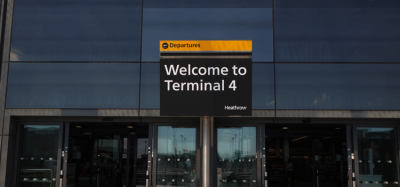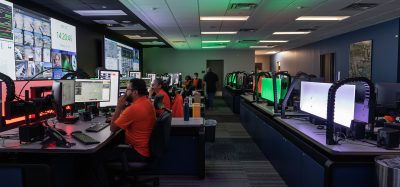Security meets customer service in Canada
Posted: 5 October 2011 | Yves Duguay, Senior Vice-President, Operations and Customer Experience, Canadian Air Transport Security Authority (CATSA) | No comments yet
The next time you pass through security at a major Canadian airport, you may find the queues moving a little faster than usual. That’s because the Canadian Air Transport Security Authority (CATSA) is making a number of innovative improvements to the security screening process for a better passenger experience.
The move towards more passenger-focused air travel is one that requires collaboration on the part of all players in the aviation industry, making the timing of this shift critical. In the aftermath of September 11, the industry was scrambling to operate within a new reality and security was, understandably, the overriding focus. But with 10 years behind us, CATSA is working within a much more mature security framework as it relates to the aviation industry where organisations such as ours must widen our approach to providing services to include the needs of the industry as well as the protection of the passenger. This means not only delivering screening services effectively and efficiently, but also considering the requirements of airports, airlines and other partners, as well as passengers.
The next time you pass through security at a major Canadian airport, you may find the queues moving a little faster than usual. That’s because the Canadian Air Transport Security Authority (CATSA) is making a number of innovative improvements to the security screening process for a better passenger experience.
The move towards more passenger-focused air travel is one that requires collaboration on the part of all players in the aviation industry, making the timing of this shift critical. In the aftermath of September 11, the industry was scrambling to operate within a new reality and security was, understandably, the overriding focus. But with 10 years behind us, CATSA is working within a much more mature security framework as it relates to the aviation industry where organisations such as ours must widen our approach to providing services to include the needs of the industry as well as the protection of the passenger. This means not only delivering screening services effectively and efficiently, but also considering the requirements of airports, airlines and other partners, as well as passengers.
It is an end-to-end approach that relies heavily on partnerships based on the common goal of ensuring the safety and security of passengers, while improving their overall air travel experience. And it fits well with the direction already taken by CATSA as a result of ongoing stakeholder, passenger and screening officer input.
Late last year, CATSA developed and began implementing – in consultation with our regulator, Transport Canada – a security screening process improvement plan, demonstrating our commitment to respond to this input. The improvements to customer service and screening processes stemming from this plan were based on a consideration of the security process within a broader air travel environment. The outcome of this more allencompassing approach – which includes riskbased measures – is that CATSA is now better positioned to serve the needs of diverse passenger groups, and increase the number of passengers and bags screened each hour at the security screening checkpoint, without compromising security.
Changes at the Checkpoint
Taking advantage of the existing joint customs and immigration programme for frequent travellers between Canada and the United States, in 2010 CATSA introduced designated screening lines for pre-approved travellers who possess a valid NEXUS card. This is a concrete step toward risk-based screening, and a more targeted approach that allows us to expend fewer resources on passengers who have already undergone a rigorous risk assessment process and have been deemed to be low-risk.
It also offers improved customer service for NEXUS members, with less time spent in the pre-board screening queue and a generally expedited screening experience. In a recent study, 90 per cent of NEXUS members surveyed reported overall satisfaction, citing lower wait times and faster processing. Following a successful pilot last year, designated lines are now available at all domestic and international checkpoints at Canada’s eight largest airports and at additional checkpoints in eight other airports, with future plans to extend this service to transborder traffic. This is good news for the over 576,000 members of the NEXUS programme – a membership with a current growth of approximately 10,000 new members monthly. CATSA has also added family/special needs lines at Canada’s major airports, staffed with screening officers trained to offer additional assistance to families with small children, those with mobility issues and other who may require more time and help to move successfully through the screening process. These lines are also equipped with x-ray screening technology specifically designed for bigger items such as wheelchairs, strollers and car seats.
Another change at the checkpoint involves a new re-divest procedure that has proven to be a welcome time-saver for passengers and screening officers alike. Those who alarm at the walk-through metal detector now have a second chance to remove metal objects, such as forgotten keys, cell phones or coins from their pockets. Results have shown a 51 per cent decrease in the time screening officers spend resolving metal alarms. Furthermore, 99 per cent of alarms are resolved on the passenger’s second pass through the walk-through metal detector. When given the choice, the vast majority of passengers chose to re-divest rather than be searched by hand-held metal detector or partial physical search.
Our recent deployment of full body scanners has also provided passengers with more choices. The use of these scanners offers CATSA higher detection capabilities, while – at the same time – improving our customer service by giving an option to passengers who do not want to be physically touched during a search. For those who do opt for a physical search, new semi-private search stalls, designed to integrate into the airport environment, have been installed where space permits. These stalls provide passengers with additional choices for meeting the degree of privacy they desire when a physical search is required.
These improvements, which focus on both security and customer service, demonstrate that each can co-exist without compromise to the other and, in fact, are vital to achieving excellence at today’s security screening checkpoint. A major component of customer service for CATSA is facilitating passengers through the screening checkpoint as swiftly and securely as possible, while ensuring maximum satisfaction. As such, CATSA has adapted its training for new and existing screening officers to include a greater focus on customer service, with new modules created to specifically address this important element of the security screening process. We expect to see the fruits of our efforts in airports across the country very shortly.
On the technology side, changes at the checkpoint have included the use of innovative randomiser technology to randomly select passengers for secondary search. Currently in use at all pre-board screening checkpoints and all primary non-passenger screening checkpoints, this technology eliminates inevitable human bias in random selection, and ensures that the process is statistically sound. Our research has shown that four out of five passengers believe that the randomiser technology is a fair way to screen passengers.
CATSA has also recently negotiated regulatory flexibility that permits the use of a new hand trace procedure for the purpose of random secondary search. Hand trace is a more passenger-friendly procedure that is both efficient and non-intrusive. Since hand trace can be performed while a passenger waits in the queue for screening, results show an increased efficiency of the overall screening process.
Together, these changes are not only improving the passenger experience at preboard screening and enhancing security, but are also increasing passenger flow – a win-win for the entire industry.
A made-in-Canada solution
One innovation that CATSA has developed is a new made-in-Canada Boarding Pass Security System (BPSS) that is leading the industry in enhanced security through the electronic validation of boarding passes. Now operational at all major Canadian airports, BPSS automates the boarding pass verification process by scanning and validating information such as a passenger’s name, flight number, flight date and gate number. In the event of a security incident, this information has proven to be invaluable in the resolution process.
CATSA also uses the technology to gather valuable operational statistics such as throughput, wait times, and traffic data for performance measurement. This allows us to more effectively plan service levels at the checkpoint, with the goal of getting passengers through screening as efficiently as possible. CATSA will be using the BPSS data as a mean to develop a collaborative planning and forecasting approach for screening coverage, working with airports, airlines and its suppliers to efficiently match its offer of screening services to the industry’s demand at each of the airports where this data is collected. The ability to access wait time information from the BPSS shows promise as a real benefit to passengers in better preparing themselves for the screening process, and is just one more way for CATSA to further enhance its customer service. In June 2011, a trial was initiated at Pearson International Airport in Toronto to make wait time data available on CATSA’s website, mobile site and through Pearson’s website. The value to air travellers is that they can easily determine wait times in the queue at security screening and adjust their plans for arrival and time spent in the pre-board area accordingly, should they choose.
To gather wait time data, the BPSS is used to scan a passenger’s boarding pass twice – once when they enter the beginning of the queue for security screening and again when they enter the checkpoint. Wait time information is available in real-time and represents the average wait time over the last 10 minute period. This information is also of relevance to our partners in airports, given that the patterns of time passengers arrive at an airport that they currently gather and consult are based on a model developed before the introduction of web-based check-in and self-serve kiosks. The shift in arrival patterns resulting from these selfservice options is therefore not currently taken into consideration, making the data gathered by BPSS a potential new source of information for airports and air carriers to use in planning their use of resources more effectively. Our objective is to work with the industry and our suppliers to manage our services as efficiently and effectively as possible within an end-to-end process to achieve increased value for partners and end users, the passengers.
Building long-term partnerships and alliances
We know from extensive research that, in Canada, passengers do not necessarily differentiate between the various organisations they encounter at the airport – be it CATSA, the airline, the airport authority, or partners like the Canada Border Services Agency. To this end, it’s the collective responsibility of all of us in the aviation industry to work collaboratively towards a more positive air travel experience for everyone.
At CATSA, we are continuously striving to work with our partners. We want to build alliances within our industry to improve and better manage the air travel process from start to finish – from the time a passenger books their travel to the time they board the aircraft. To be successful, these alliances must be built on trust, respect, transparency and reciprocity of information. Only then can we effectively work together, tailoring our services to better meet the needs of passengers while ensuring the passenger experience is seamless, pleasant and, above all, secure.
This is a significant undertaking given that CATSA is mandated to provide screening services in 89 airports across Canada. Our many partners have their own business plans, their own approaches to customer service and operational and scheduling issues, but our interests and objectives are the same; we want to protect the passenger, process them as pleasantly and expediently as possible and achieve an overall high level of satisfaction on their part. As such, CATSA plans to involve our partners as early as possible in a reciprocal exchange of information. This will allow us to ensure we can better gauge passenger arrival and, in turn, the deployment of our services, process passengers as quickly and securely as we can, and gather passenger feedback on what we can improve. Sharing the information gathered through the BPSS is a step in this direction and one way that CATSA is working towards being a better partner.
From past collaborative undertakings, we know that this is a productive way forward. For example, in an effort to educate passengers on how to prepare for security screening prior to arriving at the airport, CATSA implemented ‘Pack smart’, a targeted passenger campaign based on social marketing principles. The passenger campaign has established partnerships with a number of key industry partners including travel agents and major air carriers in Canada. ‘Pack smart’ messaging – information on how to pack and what passengers can bring in their baggage – was featured in reminder emails to passengers, on e-tickets and paper boarding cards. CATSA’s ‘Prep-and-Fly Pack Smart’ tool also appeared on their web sites. Results included reduced delays, with better-prepared passengers contributing to a smoother, faster screening process and a more positive passenger experience. In alignment with our vision to not only secure passengers but to improve their overall screening experience, we have also begun collecting passenger feedback quarterly at the largest airport in each of our operating regions. Our surveys focus on the passenger experience at the screening checkpoint and gather information on their views related to our procedures, their satisfaction with the speed of screening and the conduct of our Screening Officers. CATSA works closely with airport authorities to share our results and plan the field work. Our partners have been very supportive of these initiatives and we are now looking at ways to collect survey data more regularly with the end goal of better serving our customers.
As a building block to this initiative, we began by engaging airports and airlines in an effort to map out the process of a passenger’s entire travel experience end to end and create a passengers’ value map. This has enabled us to identify opportunities for both CATSA and our partners to better target information to passengers that can help ensure a positive screening experience.
Such partnerships not only present a great opportunity for industry collaboration to support the passenger, but also allow CATSA to reach air travellers when they are most receptive to receiving our messages – that is, when they are researching their trip, booking their air travel and finally, when they are packing and preparing for the airport.
We are making significant progress through these partnerships, and to further our goal of achieving a seamless passenger experience, CATSA is developing a proposal to create a more formal alliance with our partners through Memorandums of Understanding (MOUs). These MOUs would build on relationships based on common principles, for the sharing of information, including that which is private, commercially confidential and sensitive, so that we can better integrate our service into airports and work more closely with airport authorities and air carriers.
We believe that through the sharing of information, the security screening portion of the passenger experience can be better managed, leading to higher throughput and improved security, and an improvement in the overall air travel experience. And we remain committed to working proactively with our industry partners in all areas to achieve continuous improvements and to identify ways to increase efficiencies and enhance the entire air travel process.
To achieve this CATSA will continue to expand our partnership efforts to other air carriers and airport authorities in the near future. As a service provider, it is in our best interests to ensure that the industry remains healthy and growing, and that our customers are satisfied with their chosen method of travel.
About the Author
Yves Duguay is CATSA’s Senior Vice-President of Operations and Customer Experience. He is accountable for the security screening of all passengers, non-passengers and their baggage at Canada’s 89 designated airports. He is CATSA’s champion for service, leading the organisation’s efforts to improve the overall passenger experience while ensuring the security of the travelling public.
Are you ready to meet the expectations of Gen Z travellers? Join our virtual panel to discover how airports can engage the next generation of passengers.
16 Oct 2025 | 14:00 PM BST | FREE Virtual Panel Discussion
Join us for this interactive session where industry leaders will explore how airports are adapting to the needs and values of Gen Z, the first truly digital-native, socially conscious, and tech-savvy generation.
What You’ll Learn:
- What drives Gen Z travel decisions, and how to respond
- How to harness digital tools, social media, and mobile-first strategies
- How sustainability, inclusivity, and personalised experiences shape Gen Z’s airport expectations
- Real-world examples from leading airports that are successfully engaging younger travellers
Don’t miss your chance to learn from the airports leading this change – Register Now – It’s Free!


















